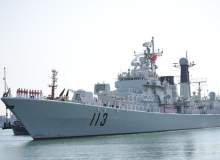

Around ten nations from the international community are currently assisting the search to find the missing Malaysian Airlines aircraft, which had 239 people on board. The plane was expected to arrive in Beijing from Kuala Lumpur on Saturday morning but contact was lost over the Gulf of Thailand.

Discover B2B Marketing That Performs
Combine business intelligence and editorial excellence to reach engaged professionals across 36 leading media platforms.
Despite nearly three days of searching, and several false sightings of wreckage and oil slicks, the plane has still not been found. Now a joint international effort is underway to find the missing aircraft, an effort which has been described as ‘overwhelming’ by Malaysian authorities.
Efforts are focusing on the aircraft’s last known whereabouts over the Gulf of Thailand, but searches are also underway in the Malacca Straits and South China Sea. This has required unprecedented cooperation between Malaysia, China, Vietnam, Philippines and the US, countries which have not always seen eye to eye in the region.
China sends warships to assist search
The search area is thought to cover thousands of kilometres, and as each hour passes with no sightings that area is widening.
According to reports China has at least seven ships in the area. The Beijing-bound flight had 154 Chinese nationals on board which means finding the aircraft is a top priority for the Chinese government. Despite their contribution, a spokesman for the Chinese Government has urged Malaysia to step up its search operations and begin an investigation into the crash.

US Tariffs are shifting - will you react or anticipate?
Don’t let policy changes catch you off guard. Stay proactive with real-time data and expert analysis.
By GlobalDataTerritorial disputes in the South and East China Seas and an impetus to defend strategic access points have driven naval fleets in the region to invest.
"We have a responsibility to demand and urge the Malaysian side to step up [its] search efforts, start an investigation as soon as possible and provide relevant information to China correctly and in a timely manner," said Chinese foreign ministry spokesman Qin Gang.
Malaysia has deployed a sizeable military force for the search operation including four C-130 aircraft, one CN325 aircraft, four EC725 helicopters and one Beechcraft King Air aircraft from the Malaysian Air Force. The Philippine Navy has at least three naval vessels and an aircraft in the region.
On Monday, four aircraft and two ships from Vietnam were also searching for a ‘rectangular object’ spotted in the waters but had found nothing. Vietnam has played a prominent role in the search and rescue attempts, not least because the aircraft may have gone down in Vietnamese waters.
With its significant naval presence around Asia, the US Navy has also deployed vessels and surveillance aircraft to scour the seas. A P-3C Orion, normally used for anti-submarine operations, has taken off from Japan and will join the search alongside the guided missile destroyer USS Pinckney.
Video released by the US Navy yesterday shows one of two MH-60 Seahawk helicopters taking off from the Pinckney to begin search operations.
Putting old differences aside
All these naval assets in one place can often be an ominous sign that tensions in the region are heating up. But, for now, countries like China and the US have been able to put their differences aside in order to locate the missing airliner along with the passengers and crew on board. Desperate relatives in China and Malaysia will be hoping this cooperation will at last yield some results.
Despite the much publicised cooperation to search for the missing Boeing 777, old hostilities remain.
Only three months ago a US Navy cruiser came close to colliding with a Chinese vessel in the South China Sea. The Ticonderoga-class guided missile cruiser USS Cowpens was carrying out surveillance on Chinese ships in international waters when a Chinese amphibious dock ship crossed the bow. With just 500 yards separating them, Cowpens had to take evasive action.
Helicopters with anti-submarine warfare (ASW) systems are widely deployed by naval forces as a means to counter submarines at long ranges.
On Monday, Chinese coast guard vessels drove away two Philippine vessels which approached the Second Thomas Shoal, a disputed coral reef in the South China Sea. Last month, China was also accused of using water cannons on Filipino fisherman in the same area.
For the time being, the joint effort is ongoing and a rare show of unity in the South China Sea could eventually provide some answers for relatives who are still waiting for information about loved ones.
Follow Grant Turnbull on Google+


.gif)



